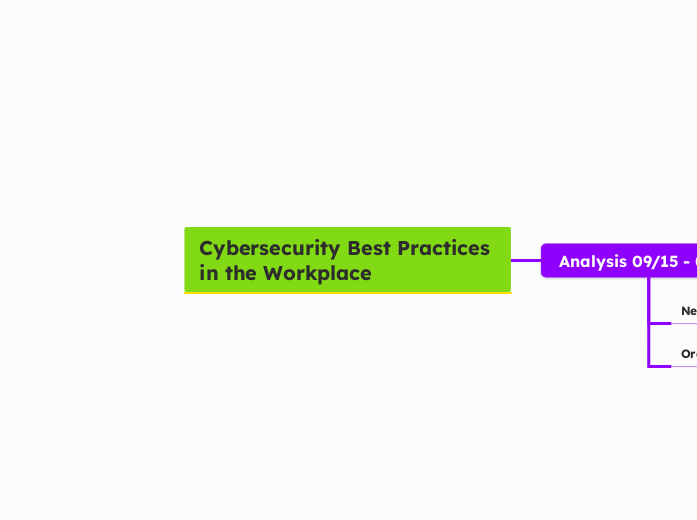Cybersecurity Best Practices in the Workplace
Analysis 09/15 - 09/22
Needs Assessment
Conduct surveys and interviews with employees across all levels to identify current cybersecurity knowledge gapsEvaluate employees' understanding of common cybersecurity threats and best practicesAssess the current level of password security and phishing awareness among staffDetermine employees' familiarity with data handling procedures and software update practices
Organizational Analysis
Evaluate the company's current cybersecurity posture and existing security protocolsIdentify key areas of vulnerability within the organization's digital infrastructureAnalyze recent security incidents or near-misses to determine patterns and areas for improvementReview the company's existing cybersecurity training programs and their effectiveness
Design - 09/23 - 10/06
Course Objectives Development
Refine and finalize the five main learning objectives based on the analysis phase findingsDevelop specific, measurable sub-objectives for each main learning goalAlign objectives with Malcolm Knowles' Adult Learning Theory principlesCreate a detailed course outline incorporating all objectives
Module Structure Planning
Design the five-module structure focusing on key cybersecurity aspectsPlan interactive elements for each module (e.g., simulations, quizzes, discussions)Develop storyboards for interactive content and video lecturesCreate a blueprint for the phishing simulation exercise
Development 10/07 - 10/27
Content Development
Develop comprehensive content for Module 1: Cybersecurity FundamentalsCreate interactive materials for Module 2: Password SecurityDesign and implement phishing simulation exercise for Module 3: Phishing AwarenessProduce video lectures and interactive quizzes for each module
Theory Integration
Develop content for Module 4: Data Handling, including case studies on data breach scenariosCreate materials for Module 5: Software Updates and Cybersecurity CultureDesign practical exercises on data classification and encryptionFinalize all interactive elements and assessments for the entire course
Implementation 10/28 - 11/03
Course Upload and Testing
Upload all course materials to the Moodle Learning Management SystemSet up interactive elements, quizzes, and discussion forums in MoodleConfigure user access and enrollment settings
Quality Assurance and Troubleshooting
Conduct thorough testing of all course modules and interactive elementsVerify functionality across different devices and browsersAddress any technical issues or glitches identified during testing
Pilot Testing
Run a pilot test with a small group of employees from various departmentsGather immediate feedback on course content, usability, and technical aspectsMake necessary adjustments based on pilot test feedback
Evaluation 11/04 - 11/08
Evaluation Tool Development
Create pre- and post-course knowledge assessments to measure learning gainsDevelop an affective impact survey to gauge participants' attitudes and confidence levelsDesign performance-based evaluations through practical exercises and simulationsPrepare feedback surveys for each module and the overall course
Long-term Impact Assessment Planning
Plan for 3-6 month post-course impact assessmentDevelop metrics to evaluate the lasting effects on participants' cybersecurity practicesCreate a strategy to assess the impact on the organization's overall security postureDesign follow-up surveys for learners and their managers
